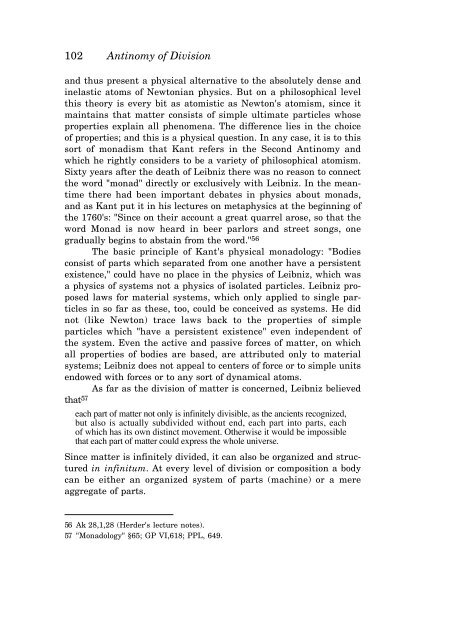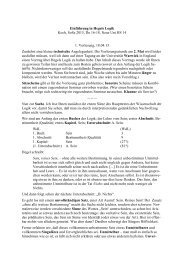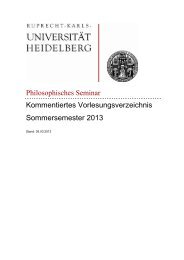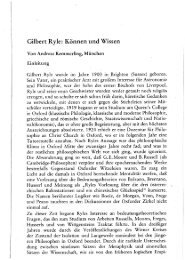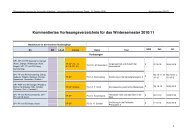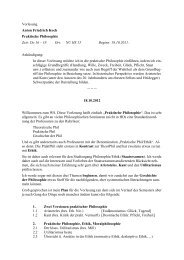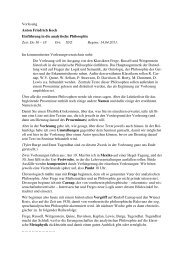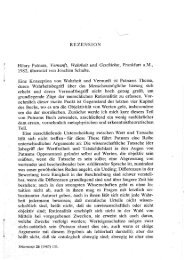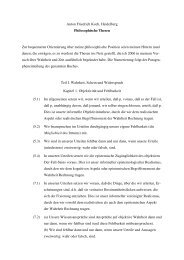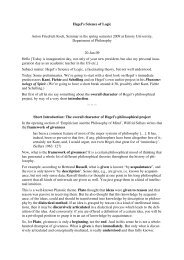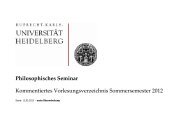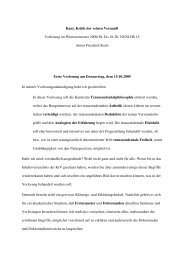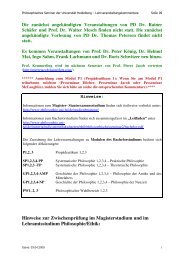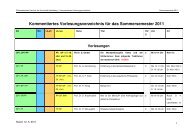KANT'S CRITIQUE OF TELEOLOGY IN BIOLOGICAL EXPLANATION
KANT'S CRITIQUE OF TELEOLOGY IN BIOLOGICAL EXPLANATION
KANT'S CRITIQUE OF TELEOLOGY IN BIOLOGICAL EXPLANATION
You also want an ePaper? Increase the reach of your titles
YUMPU automatically turns print PDFs into web optimized ePapers that Google loves.
102 Antinomy of Division<br />
and thus present a physical alternative to the absolutely dense and<br />
inelastic atoms of Newtonian physics. But on a philosophical level<br />
this theory is every bit as atomistic as Newton's atomism, since it<br />
maintains that matter consists of simple ultimate particles whose<br />
properties explain all phenomena. The difference lies in the choice<br />
of properties; and this is a physical question. In any case, it is to this<br />
sort of monadism that Kant refers in the Second Antinomy and<br />
which he rightly considers to be a variety of philosophical atomism.<br />
Sixty years after the death of Leibniz there was no reason to connect<br />
the word "monad" directly or exclusively with Leibniz. In the meantime<br />
there had been important debates in physics about monads,<br />
and as Kant put it in his lectures on metaphysics at the beginning of<br />
the 1760's: "Since on their account a great quarrel arose, so that the<br />
word Monad is now heard in beer parlors and street songs, one<br />
gradually begins to abstain from the word." 56<br />
The basic principle of Kant's physical monadology: "Bodies<br />
consist of parts which separated from one another have a persistent<br />
existence," could have no place in the physics of Leibniz, which was<br />
a physics of systems not a physics of isolated particles. Leibniz proposed<br />
laws for material systems, which only applied to single particles<br />
in so far as these, too, could be conceived as systems. He did<br />
not (like Newton) trace laws back to the properties of simple<br />
particles which "have a persistent existence" even independent of<br />
the system. Even the active and passive forces of matter, on which<br />
all properties of bodies are based, are attributed only to material<br />
systems; Leibniz does not appeal to centers of force or to simple units<br />
endowed with forces or to any sort of dynamical atoms.<br />
As far as the division of matter is concerned, Leibniz believed<br />
that 57<br />
each part of matter not only is infinitely divisible, as the ancients recognized,<br />
but also is actually subdivided without end, each part into parts, each<br />
of which has its own distinct movement. Otherwise it would be impossible<br />
that each part of matter could express the whole universe.<br />
Since matter is infinitely divided, it can also be organized and structured<br />
in infinitum. At every level of division or composition a body<br />
can be either an organized system of parts (machine) or a mere<br />
aggregate of parts.<br />
56 Ak 28,1,28 (Herder's lecture notes).<br />
57 "Monadology" §65; GP VI,618; PPL, 649.


